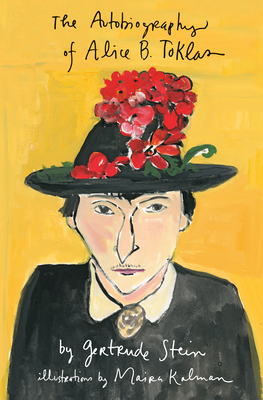
Title: The Autobiography of Alice B Toklas
Rating: 4 Stars
This was one of those classic books that I’ve run across before but have always shied away from. Gertrude Stein is infamous for her experimental literature. I haven’t had the opportunity to read her before, but in my experience experimental in literature usually means confusing and frustrating in an intentionally obtuse manner. Reading a 300 page autobiography of her lifelong partner seemed like it would be challenging.
That shows how little I knew about it. Knowing that it’s an fascinating subject and that many people would be interested, she intentionally wrote it in an accessible manner. The book was by far the most successful thing that she wrote. In fact, except for a couple of dry spots, it was actually pretty delightful to read.
Let’s start with the fact that it’s not an autobiography of Alice B Toklas. It is allegedly written in her voice. One of the reviews that I read of it was that it actually does do a good job of imitating her stories and her voice. Having said that, it truly was written by Gertrude Stein. At the end of the book Stein mentions that she kept encouraging Toklas to write an autobiography but finally ran out of patience and ended up writing it herself.
This is not the only book that I’ve read where the rules of autobiography have been upended. I’ve written about it before, but Confessions of a Dangerous Mind, the unauthorized autobiography of game show creator and host Chuck Barris plays similar games with the genre. In Barris’ case he knowingly lied about his autobiographical details by claiming to be a CIA hit man at the same time that he was running game shows like The Dating Game. Here, Stein seems to be playing pretty straight with her facts and stories, but hides behinds the Toklas persona.
Hiding behind Toklas’ voice works to Stein’s benefit. The book is effectively Stein’s autobiography but told through the voice of her longtime life partner. Doing so allows her to glorify her accomplishments without braggadocio. For instance, quite literally on the first page, Stein, in the voice of Toklas, writes that Stein, along with Pablo Picasso and the philosopher Alfred Whitehead, is one of the three great geniuses of her age. Making such a grandiloquent claim while hiding behind Toklas is pretty hilarious. Similarly, writing as Toklas, Stein boldly puts forth that she has essentially blazed a brand new form of literature that lesser lights like Sherwood Anderson are now following. Considering the relatively modest position her reputation is now in the literary world, such audacious claims make me smile.
Another interesting product of writing an autobiography from a third person perspective is that, if you’re a person that is not comfortable sharing intimate thoughts, this allows you to hide those uncomfortable thoughts. Writing as Toklas, she just describes her adventures and her accomplishments. Since Toklas would be expected to have no insights into her introspective thoughts, she can describe these without the difficulty of expressing messy interior thoughts.
The big reason why I found this book so entertaining is that for a period of some twenty years or so, Stein and Toklas were at the center of a cultural moment. For a period of time from about 1910 to 1930 or so, she had a simply unimaginable number of intimate friendships with people that were or became celebrated artists. Her best friend was probably Pablo Picasso. Check out the list of people that she name drops in this book: Henri Matisse, Ernest Hemingway, F Scott Fitzgerald, Sinclair Lewis, Ezra Pound, Sherwood Anderson, Isadora Duncan, Ford Madox Ford, William Carlos Williams, May Ray, and Marcel Duchamp. That’s just a partial list.
In case you think that she just hung around artists, she also met such people as John Reed, the communist activist / journalist that inspired the movie Reds and the great muckraking journalist Lincoln Steffins.
For many of these characters, she tells interesting anecdotes about them. They had spirited dinners together. Stein ran a salon where many of them congregated and argued. In fact, if the book is to believed, Toklas was the person that introduced Hemingway to the majesty and mystery of bullfighting. If true, in so doing she altered literature history.
It wasn’t just about dinners and conversation. One of the most significant events in classical music history is the first performance of Stravinsky’s The Rite of Spring. For those unaware, the music was so unconventional that the audience rioted. Stein and Toklas were actually there at that premiere in 1913. Similarly, they were active during WWI. They drove a truck delivering supplies to wounded soldiers in hospitals. At the end of the way, they made their way to the front and witnessed the front line trenches.
Especially during the years before WWI, Stein and Toklas, along with their fellow artists, lived in relative poverty. I say relative because even though they did not have much money, they still managed to have a servant. If they suffer from poverty, it’s left unsaid how poor their servant must have been. Regardless, they were able to purchase paintings from their friends for pittances. Some painters outright gifted them their work. So, even though they lived at a not very luxurious address, their walls were covered with fine art that in later years would appreciate significantly.
Given that they lived in relative poverty but in an artistically rich environment, it should be no surprise that this book would resonate so strongly with the 1960s counterculture. In many ways, Stein and Toklas lived their lives in the 1910s in a manner that the later generation much envied.
This book was an entertaining look at an important cultural moment.